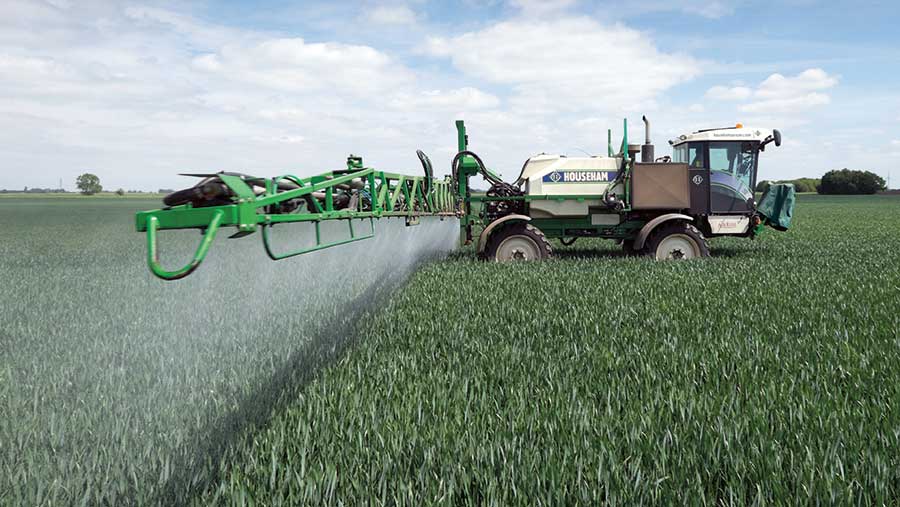3 new pesticide technologies set to help arable farmers
 © Tim Scrivener
© Tim Scrivener A third-generation SDHI fungicide, a three-in-one plant activator and insecticidal gels that work with lure-and-kill technology are among the developments that might fill some of the gaps being left by the loss of familiar agrochemical names.
While most of these new products are at least five years away from commercialisation, there are innovations with potential on the horizon – some of which are still shrouded in secrecy.
Third-generation SDHI
Bayer has a third-generation SDHI, isoflucypram, in development, and early indications suggest that it is effective against all of the main foliar pathogens of wheat and barley, although it has not been approved or subjected to regulatory process.
See also: 3 pesticide approvals to look out for in 2017
“Isoflucpyram offers a step up in septoria control. It also brings rust control equivalent to the best products on the market.” says Will Charlton of Bayer.
He confirms that when the time comes the company will launch it in a mix with other chemistry from the company, reflecting its existing approach to stewardship and resistance management.
“It’s the next stage in SDHIs. As with all of our products, it will have to clear resistance and regulation hurdles, as well as meet our customers’ needs,” he adds.
Growth promoter
Trivazen is the brand name for a three-in-one product from Arlabion, a small start-up company that claims the product “does a bit of everything”.
Whether it’s a fungicide, a biocide, a plant activator or a mix of all three remains to be seen, although it is most likely to come to the market as a growth promoter.
With a patent pending, Arlabion’s chief executive officer Ella Kainina is tight-lipped about the active ingredient, although she does point out that it cannot be affected by resistance. What she will reveal is that it is a water-soluble powder that contains zinc ions and has low toxicity.
“It’s used in low concentrations and there is a dose effect, which is why we see dual action as a plant activator and a fungicide. It improves germination, emergence, plant survival and growth,” she says.
It also has an effect on bacteria such as salmonella, cholera and E.coli, so has potential to be used in a disinfectant-type product, as well as in seed treatments and foliar sprays.
Otherwise, it has been tested in onions as a seed treatment, with promising results, and in wheat, barley and maize.
Against septoria, it proved better as a curative treatment than as a protectant, but would need to be applied with a partner product to meet expectations.
Gel applications
Vegetable-based gels that can hold an insecticide and be used in insect traps or devices are showing promise for Hockley Agro, who is working with partner companies on the technology.
The use of pheromones to attract insects into traps is established practice in some crops, says Frank Howard of Hockley, but applying an insecticide gel to the plastic device adds another dimension.
“Lure-and-kill techniques aren’t new. But with an insecticide held in a rainfast, UV-stable gel thath is coating the device, you get a better kill. And that’s from a very low dose of the active ingredient,” he adds.
In Brazil, where boll weevils have multiplied since the introduction of GM cotton, the use of insecticides has increased to as many as 15 sprays per season.
The weevil lays its eggs just as the cotton bolls open, over a number of weeks, making it difficult to pinpoint spray timings.
Gel-coated traps placed around the crop margins – which is where the weevils over-winter – are then used to lure the pest as they start to migrate, so reducing the need to spray.
